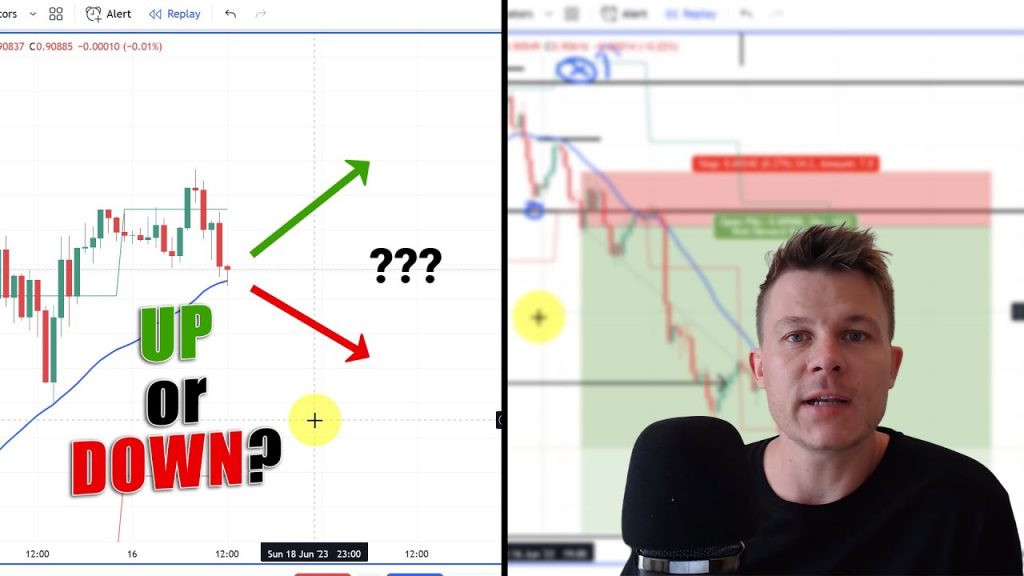In the dynamic realm of financial trading, where countless strategies and indicators compete for attention, one phrase consistently rings true: “Price Action is King.” Seasoned traders and analysts often emphasize this principle, attributing their success to the mastery of price action analysis. In this article, we delve into the rationale behind this proclamation and explore the multifaceted world of price action trading.
Understanding Price Action
At its core, price action refers to the examination of an asset’s price movement on a chart. It dismisses the clutter of excessive indicators and complex algorithms, focusing instead on the raw data that shapes market trends. Candlestick patterns, a fundamental aspect of price action, offer insights into market psychology and sentiment. Whether it’s a bullish engulfing pattern signaling a potential upward reversal or a bearish harami indicating a shift in momentum, these patterns unveil hidden narratives.
Support and resistance levels, another cornerstone of price action analysis, act as historical markers of price movement. Traders scrutinize these levels to gauge potential entry and exit points, enhancing the precision of their strategies. Reading price action also involves identifying trends, deciphering whether the market is bullish, bearish, or trapped in a sideways movement.
The Power of Price Action in Technical Analysis
Price action stands tall amidst the myriad of technical analysis tools available. Unlike lagging indicators, which rely on past price data, price action provides real-time insights. It complements or even replaces traditional indicators like Moving Averages or MACD. Reversal patterns, such as the revered pin bar or engulfing candle, serve as beacons of potential trend shifts.
Fibonacci retracement, harmonizing with price action, assists in predicting potential support and resistance zones. The confluence of these techniques empowers traders to make informed decisions based on the ebb and flow of price alone.
Psychological Aspects of Price Action
Beneath the surface of price action analysis lies a psychological battlefield. Market sentiment, often swayed by fear and greed, manifests in price patterns. The collective emotional state of traders reverberates through the charts, creating recognizable formations. Understanding these behavioral cues can mean the difference between a winning trade and a costly mistake.
By immersing oneself in price action, traders develop a heightened sense of market intuition. They learn to discern between genuine price reversals and false alarms, harnessing their emotional intelligence to navigate turbulent waters.
Developing a Price Action Trading Strategy
Crafting a price action strategy demands meticulous planning. Setting clear entry and exit points based on price action signals is paramount. This approach lends itself to effective risk management, as traders avoid impulsive decisions driven by fleeting market noise.
Price action’s versatility shines across various timeframes, allowing traders to adapt to short-term scalping or long-term trend following. Backtesting, a crucial step in strategy development, enables traders to fine-tune their methods and validate their historical performance.
Price Action in Different Markets
Price action’s reign extends across diverse financial landscapes. In the realm of forex trading, where currency pairs dance to global economic rhythms, price action stands as a universal language of market dynamics. Similarly, in stock markets, where company performance echoes in share prices, price action illuminates underlying shifts.
Even in the realm of cryptocurrencies, notorious for their volatility, price action unveils patterns within the chaos. Bitcoin’s meteoric rises and plunges find context through the lens of price action analysis.
Advantages of Price Action Trading
The allure of price action lies in its simplicity amidst complexity. By distilling market movements into comprehensible patterns, it empowers traders of all levels. Its applicability to various timeframes grants traders the freedom to adapt their strategies as market conditions evolve.
Price action thrives in both volatile and sideways markets. While indicators may falter during erratic price swings, price action retains its efficacy. Its adaptability makes it a staple in the trader’s toolkit.
Limitations and Challenges
As with any methodology, price action has its limitations. The subjectivity of interpreting price patterns can lead to discrepancies among traders. What one perceives as a bullish engulfing pattern, another might view as a mere consolidation.
False signals and whipsaws, though minimized through experience, remain a challenge. No strategy, including price action, is immune to unexpected market gyrations. Diligent risk management and continuous learning are imperative.
Conclusion
In a realm where market dynamics are influenced by a tapestry of factors, price action emerges as a steadfast guiding light. Its emphasis on price movement and human psychology underscores its timeless relevance. By mastering price action analysis, traders equip themselves with a potent skill set that transcends trends and withstands market turbulence. As you embark on your trading journey, remember: amidst the cacophony of indicators, “Price Action is King.”
FAQs
- Is price action suitable for all types of traders? Absolutely! Price action can be adapted to various trading styles, from day trading to long-term investing. Its principles are universal.
- Can price action be used with other indicators? Yes, price action can complement other indicators, enhancing the accuracy of trading strategies.
- Is price action analysis time-consuming? While it requires practice, price action analysis becomes more efficient with experience. It can significantly streamline decision-making.
- Are there resources to learn more about price action? Many educational materials, online courses, and books delve into price action analysis, catering to traders of all skill levels.
- Can automated trading systems incorporate price action? Certainly. Codifying price action principles into automated algorithms is possible, although human discretion remains invaluable.
In conclusion, the realm of trading bows to the supremacy of price action. Its unwavering focus on price movement and the psychology driving it grants traders a competitive edge. By embracing the art of price action analysis, you unveil the intricate tapestry of the market, positioning yourself as a discerning trader amidst the tumultuous seas of finance.
